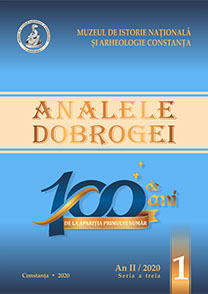CHESTIUNEA DOBROGEI ÎN RELAŢIILE ROMÂNO-RUSE, VĂZUTĂ PRIN PRESA VREMII
THE DOBROGEA ISSUE IN ROMANIAN-RUSSIAN RELATIONS SEEN THROUGH THE WEATHER PRESS
Author(s): Constantin CheramidogluSubject(s): History, Political history
Published by: Muzeul de Istorie Națională și Arheologie Constanța
Keywords: Dobruja; Romanian-Russian relations; geopolitics of the Black Sea; the press;
Summary/Abstract: The Romanian-Russian relations in the period 1877-1945 knew all the forms of manifestation, from military alliances to the state of war, as the political situation of the area evolved, but also according to the geopolitical interests of Russia, or later of the Soviet Union. The geographical position of the territory of Dobrogea favored these manifestations, the importance of the Dobrogea corridor in Russia's expansion tendencies towards the Black Sea straits, being obvious. On the other hand, Romania's position at the mouth of the Danube, as a guarantor of freedom of navigation on the Danube, was supported by other European powers, so that maintaining balance in the area was important not only for Romania but for the entire European continent. In this context, Russian diplomacy sought to maintain a temporary status regarding the status of Dobrogea, both in 1877-1880, after the end of the military conflict with the Ottoman Empire, and in the following years, taking advantage of Bulgaria's claims to Dobrogea and the presence of a Bulgarian minorities, but also Russian-Lipovans in Dobrogea. The Quadrilateral case (1913-1940) accentuated these tendencies, but its retrocession in 1940 and the reinstatement of Bessarabia to the U.R.S.S. they weakened the Russian interest in Dobrogea. After 1945, another political logic was entered, the Soviet Union controlling the whole area politically and militarily. This paper reviews the moments when the situation in Dobrogea was discussed, focusing on the political statements of diplomats and accountants in the countries concerned, but also presenting how the issue was viewed by foreign observers, journalists from major European newspapers.
Journal: Analele Dobrogei
- Issue Year: I/2020
- Issue No: II seria3
- Page Range: 43-59
- Page Count: 17
- Language: Romanian

